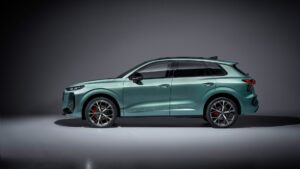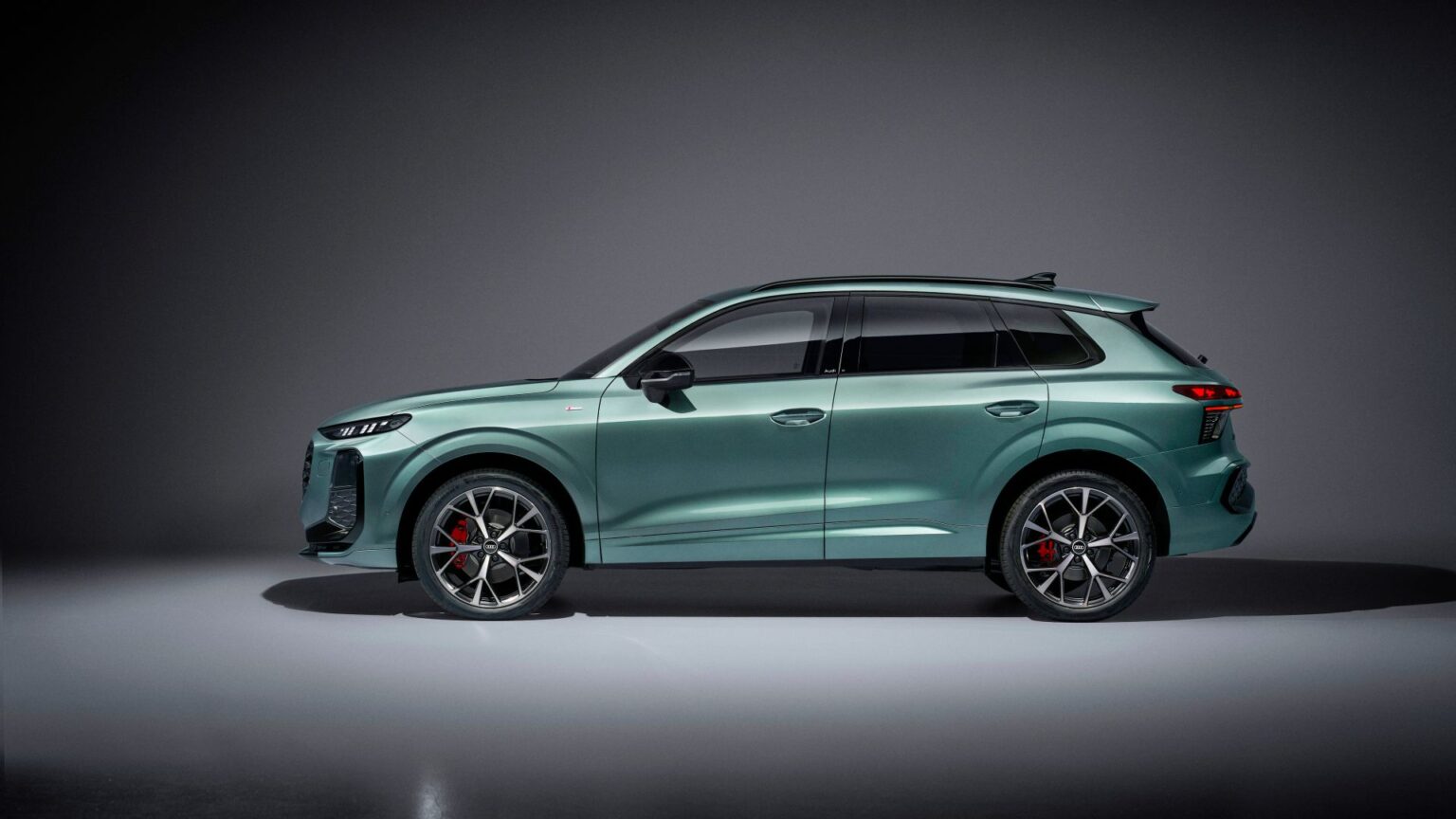The current-generation Audi Q3 was an improvement over the prior model. It rides on the MQB platform that underpins the Volkswagen Golf, which we can only get as a GTI or Golf R. But it hasn’t been as much fun to drive, or as high-tech, as higher-rung Audis.
Now the new Q3 has dropped. From the details we’ve just gleaned about the car Audi will begin selling this fall in Europe, it looks like a massive improvement. And this isn’t just for Europe. This car is coming next year to the U.S. And Audi’s on a mission to push more value into their smallest model for North America, too. Here are a few critical elements of the Q3 that have us very chuffed to drive it Stateside:
- A Sportier Look
- Way Higher Tech Interior
- Better Powertrain/Suspension
Mind you, everything we’re telling you is based on the EU specification, but we have confirmed the new Q3 is coming to the U.S., and we’re betting a bunch of what they’re showcasing will apply.
Sleeker And More Audi-like
It’s difficult to make a smaller car look longer and elegant. Audi’s doing their best with the restyling of the Q3, however, with a few visual tricks. They cut into the roofline at the C pillar, to make the entire roof look longer, and stretch that through the rear spoiler.
They’re pulling one visual line through the hood and around the headlamps, which are narrower LEDs, and these unite with the car’s shoulder. This is becoming a familial trait, since the A6/S6 also has a hood line that cuts around and appears to merge with the shoulder sweeping back.
But unlike that sedan and very much in keeping with the new Q5/SQ5, the Q3 emphasizes its enlarged wheel openings with fenders that halo them. In Europe, anyway, you’ll be able to get the Q3 with up to 20-inch wheels.
A Tech-Forward Cabin
Audi removed the gear shift selector from the center stack, to clear away more room for cupholders and a cooled, wireless phone charger. The Q3 also gets dual USB-C ports both front and in the second row.
The cleaned-up arrangement for shifting could work, or it could be a little too dainty, as we’ve seen from this execution with other carmakers. Audi’s video (below) showcases gear changes from the steering wheel stalk, and also using the wiper and headlight controls on the left-hand stalk.
Audi also uses backlit door cards, a feature we’ve seen in the . In the Q3, the driver can select from up to 30 different color themes for the interior.
As with the new Q5 and SQ5, the central display and instrument cluster are fused into a single unit. Luckily, as we’ve experienced in that car, there are separate steering wheel controls, a knurled audio volume knob, and the center display retains persistent climate buttons, no matter whether you’ve chosen mapping, an audio source, or you’re viewing another app from Android Auto or .
Serious Smarts We Hope To Get Here
Audi’s always pushing lighting technology. On the Q3, in Europe, the carmaker plans to incorporate headlights that can project important symbols onto the road ahead of the driver. So they can inform you that the road surface is slick. And they can beam lane markings onto the road to indicate if you’re staying within the boundary. Also, in certain grades, the adaptive cruise control can use GPS data to keep the car within its lane even when there are no road lane markings. And Audi is following Volvo by being able to pull the car over to the curb if the driver becomes unresponsive.
Unfortunately, at least when it comes to higher-tech lighting, U.S. regulators have been very slow to adapt, even when adaptive headlamps that, for instance, can shade the oncoming car, are clearly beneficial. So we’ll watch that space—with our old-tech headlamps!
Audi did pull one trick we’re hoping U.S. regulators don’t mess up: They integrated the LiDAR and radar behind the four-ring insignia. These are utterly invisible, as they should be, yet that’s an innovation other brands haven’t managed to swing.
One Engine For America
The current TFSI 2.0-liter Quattro Q3 sold in the U.S. is good for 228 horsepower. But that’s jumping a good bit, to a 261-horsepower, 2.0-liter turbo. That’s almost of necessity. The new, 2025 Volkswagen Tiguan R-Line Turbo produces 268 horsepower, so there’s no way Audi would let their own crossover fall that far behind their VW cousin. Speaking of that, the Audi’s laying the wood in the torque department, delivering 295 pound-feet vs. the Tiguan’s 258. Which will be faster in the race to 60 MPH will be interesting to see. We’re betting that neither’s slow, which is definitely good.
Oh, and we’re also betting the new Q3 handles better, with a revised steel suspension as well as an optional version with adaptive dampers. Audi’s also giving props to an improved steering feel, which, if the is anything to go on, is great news.
TopSpeed’s Take
In Europe, Audi customers get to choose from not one, but four different engines, including a small diesel and a mild hybrid. We are lucky to get the gutsy four, and Quattro as standard, and we’d expect Audi to want to keep it that way, since all-wheel-drive is simply too important for Audi’s branding here.
A bigger concern might be around pricing. We know the new Q5 starts at $52,200. The current Q3 runs $39,800 to start—which is just about the price of the Tiguan SEL R-Line. We’ll wager Audi bumps up the Q3 to $40,995, which is a fair price for a much-improved small luxury crossover.
Read the full article here



